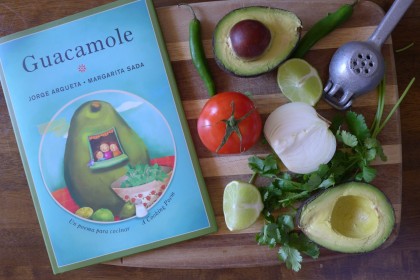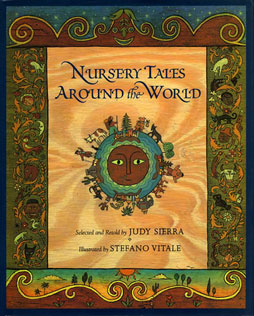- Newbery Honor Book
- 272 pages
The Wednesday Wars, by Gary D. Schmidt, opens in 1967 with the improbably named Holling Hoodhood bemoaning the start of his seventh-grade year. His new teacher Mrs. Baker, Holling asserts, hates him. Loathes him. Is actively orchestrating his downfall. Holling attempts to rally support from his family, but to no avail. His mother doesn’t believe him, his sister dismisses him, and his father is more worried about maintaining positive business relations with Mrs. Baker’s family than he is with his son’s concerns. And thus the stage is set for Holling, who (because he is a Presbyterian) is the only student who doesn’t leave school early on Wednesdays, and must therefore spend his final period on those days alone with Mrs. Baker, literally and figuratively.
The book chronicles Holling’s seventh grade year, from start to finish, with historical events like the Vietnam War, the assassination of Bobby Kennedy and Martin Luther King Jr., and Yankee baseball as the backdrop. Through his time with Mrs. Baker, Holling slowly learns to see the world as a more complicated place than he once thought, and to appreciate his ability (and responsibility!) to shape the course of his own life.
One of the strongest aspects of The Wednesday Wars is the authenticity that Schmidt brings to Holling’s perspective of 1967 and 1968. Though there are major, historically massive events taking place in the background of the novel, Schmidt addresses them always through Holling’s eyes and experiences, never giving the seventh grader more of a reaction or more of an opinion than is believable.
This balance of having Holling serve as an unbiased and yet authentic lens through which the reader experiences history is struck also in Holling’s reading of Shakespeare. When Mrs. Baker decides that reading Shakespeare is the best use of their Wednesday one-on-one time, Holling is not thrilled. Though he comes to an appreciation of Shakespeare (particularly Shakespear’s insults), Schmidt never pushes Holling's literary appreciation too far. For example, though he likes The Tempest a lot, Holling thinks that Romeo and Juliet is the story of how, “If Romeo had never met Juliet, he would have been all right,” (Schmidt, page 150).
However, Holling’s believability would have been all for naught if Schmidt had not created around his hero an authentic and relatable setting. Again, Schmidt strikes the right balance of including details and side plots that reinforce the period without taking the focus away from Holling himself. One of the strongest of these is Mrs. Bigio’s relationship with Mai Thi. Mrs. Bigio is the school cook, whose husband is killed in action in Vietnam. Mai Thi is a Vietnamese student sponsored by the Catholic Relief Agency. Without spoiling the arc of their story, Schmidt handles both of their situations with delicacy and a commitment to genuine human emotions.
The New York Times observes that, “Mrs. Baker often seems too good to be true.” Though I understand the reaction here, I disagree. True to the novel’s perspective, Mrs. Baker is seen only through Holling’s eyes. Thus, as Holling’s experiences with Mrs. Baker develop, so does her portrayal in the book. The reviewer is certainly right to note that by the novel’s end, Mrs. Baker assumed almost unbelievable integrity. However, the reader must also recall that Mrs. Baker began the novel as Holling’s most feared and diabolical enemy— a characterization equally unbelievable. If Mickey Mantle’s treatment of Holling represents the fall of an idol, Mrs. Baker represents the rise of one. There are plenty of hints to the adult reader that Mrs. Baker is as flawed and human as anyone else (asking a thirteen year old to clean out a rat cage without supervising him? Rolling her eyes at students?) These, however, are not things that register with Holling; for Holling, what resonates about Mrs. Baker is that she is there for him time and again. Her seeming “too good to be true”, then, is appropriate when one considers Holling’s perspective.
What sets The Wednesday Wars apart from other historical novels that feature the same historical events is Holling’s unique position as a character coming of age, and Schmidt’s dedication to making that journey as authentic and relatable as possible. Holling is more than a lens through which the reader views history; his is a vehicle for the reader to experience for themselves the hard questions and realities of that time. The Wednesday Wars is outstanding historical fiction because it does more than simply represent a time period or show a boy growing up; it reveals the way in which these two things are inevitably intertwined, while still writing a hero universally human enough to resonate with young readers today.
One of the strongest aspects of The Wednesday Wars is the authenticity that Schmidt brings to Holling’s perspective of 1967 and 1968. Though there are major, historically massive events taking place in the background of the novel, Schmidt addresses them always through Holling’s eyes and experiences, never giving the seventh grader more of a reaction or more of an opinion than is believable.
This balance of having Holling serve as an unbiased and yet authentic lens through which the reader experiences history is struck also in Holling’s reading of Shakespeare. When Mrs. Baker decides that reading Shakespeare is the best use of their Wednesday one-on-one time, Holling is not thrilled. Though he comes to an appreciation of Shakespeare (particularly Shakespear’s insults), Schmidt never pushes Holling's literary appreciation too far. For example, though he likes The Tempest a lot, Holling thinks that Romeo and Juliet is the story of how, “If Romeo had never met Juliet, he would have been all right,” (Schmidt, page 150).
However, Holling’s believability would have been all for naught if Schmidt had not created around his hero an authentic and relatable setting. Again, Schmidt strikes the right balance of including details and side plots that reinforce the period without taking the focus away from Holling himself. One of the strongest of these is Mrs. Bigio’s relationship with Mai Thi. Mrs. Bigio is the school cook, whose husband is killed in action in Vietnam. Mai Thi is a Vietnamese student sponsored by the Catholic Relief Agency. Without spoiling the arc of their story, Schmidt handles both of their situations with delicacy and a commitment to genuine human emotions.
The New York Times observes that, “Mrs. Baker often seems too good to be true.” Though I understand the reaction here, I disagree. True to the novel’s perspective, Mrs. Baker is seen only through Holling’s eyes. Thus, as Holling’s experiences with Mrs. Baker develop, so does her portrayal in the book. The reviewer is certainly right to note that by the novel’s end, Mrs. Baker assumed almost unbelievable integrity. However, the reader must also recall that Mrs. Baker began the novel as Holling’s most feared and diabolical enemy— a characterization equally unbelievable. If Mickey Mantle’s treatment of Holling represents the fall of an idol, Mrs. Baker represents the rise of one. There are plenty of hints to the adult reader that Mrs. Baker is as flawed and human as anyone else (asking a thirteen year old to clean out a rat cage without supervising him? Rolling her eyes at students?) These, however, are not things that register with Holling; for Holling, what resonates about Mrs. Baker is that she is there for him time and again. Her seeming “too good to be true”, then, is appropriate when one considers Holling’s perspective.
What sets The Wednesday Wars apart from other historical novels that feature the same historical events is Holling’s unique position as a character coming of age, and Schmidt’s dedication to making that journey as authentic and relatable as possible. Holling is more than a lens through which the reader views history; his is a vehicle for the reader to experience for themselves the hard questions and realities of that time. The Wednesday Wars is outstanding historical fiction because it does more than simply represent a time period or show a boy growing up; it reveals the way in which these two things are inevitably intertwined, while still writing a hero universally human enough to resonate with young readers today.




















